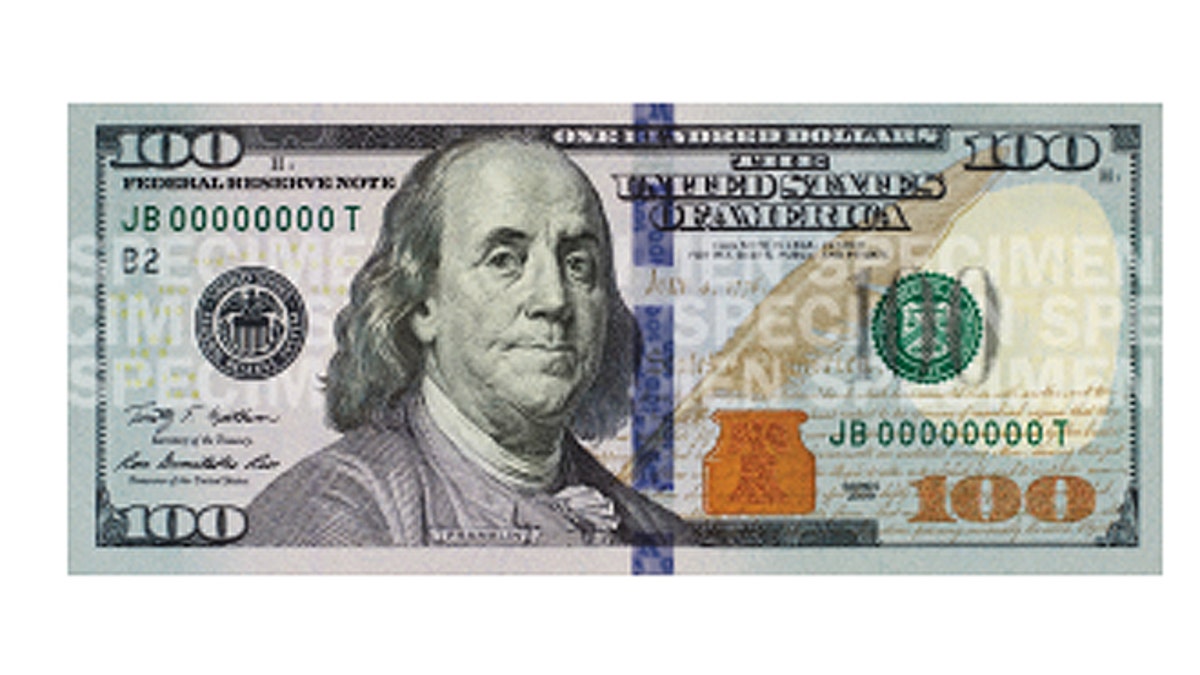
The new $100 bill, seen above, is the latest denomination of U.S. currency to be redesigned and is scheduled to be in circulation beginning on Oct. 8. (U.S. Treasury)
The redesigned $100 bill might not be coming to a wallet near you so soon after all.
The Bureau of Engraving and Printing has reportedly hit a production snafu at one of the country’s two currency factories, according to a document cited by The New Yorker, causing the agency to ask its Texas facility to expedite production ahead of an Oct. 8 deadline.
“The cause of the latest blunder is something known as ‘mashing,’ according to Darlene Anderson, a spokeswoman for the bureau,” The New Yorker reports. “When too much ink is applied to the paper, the lines of the artwork aren’t as crisp as they should be, like when a kid tries to carefully color inside the lines — using watercolors and a fat paintbrush.”
The redesigned bill — which will feature a Liberty Bell that changes color and small 3-D images — had been scheduled for release in early 2011, but massive printing errors in addition to the recent “mashing” problem has plagued the effort.
[pullquote]
Recent batches of the bills from the Washington, D.C., plant contained “clearly unacceptable” versions intermixed with passable ones, according to a July memo to employees from Larry Felix, the bureau’s director. As a result, the Federal Reserve is returning more than 30 million $100 bills while another $30 billion in bills awaits examination. Federal officials have told the agency that they will not accept any Benjamin Franklin notes produced at the Washington facility until further notice.
That error, according to The Atlantic Wire, is a $3.79 million mistake since the bills cost 12 cents each to produce and will cost another $12,000 to destroy them.
“There are dire consequences involved here because BEP sells Federal Reserve notes to the Board to finance our entire operation,” Felix wrote in the memo. “If BEP does not meet the order, the BEP does not get paid.”

